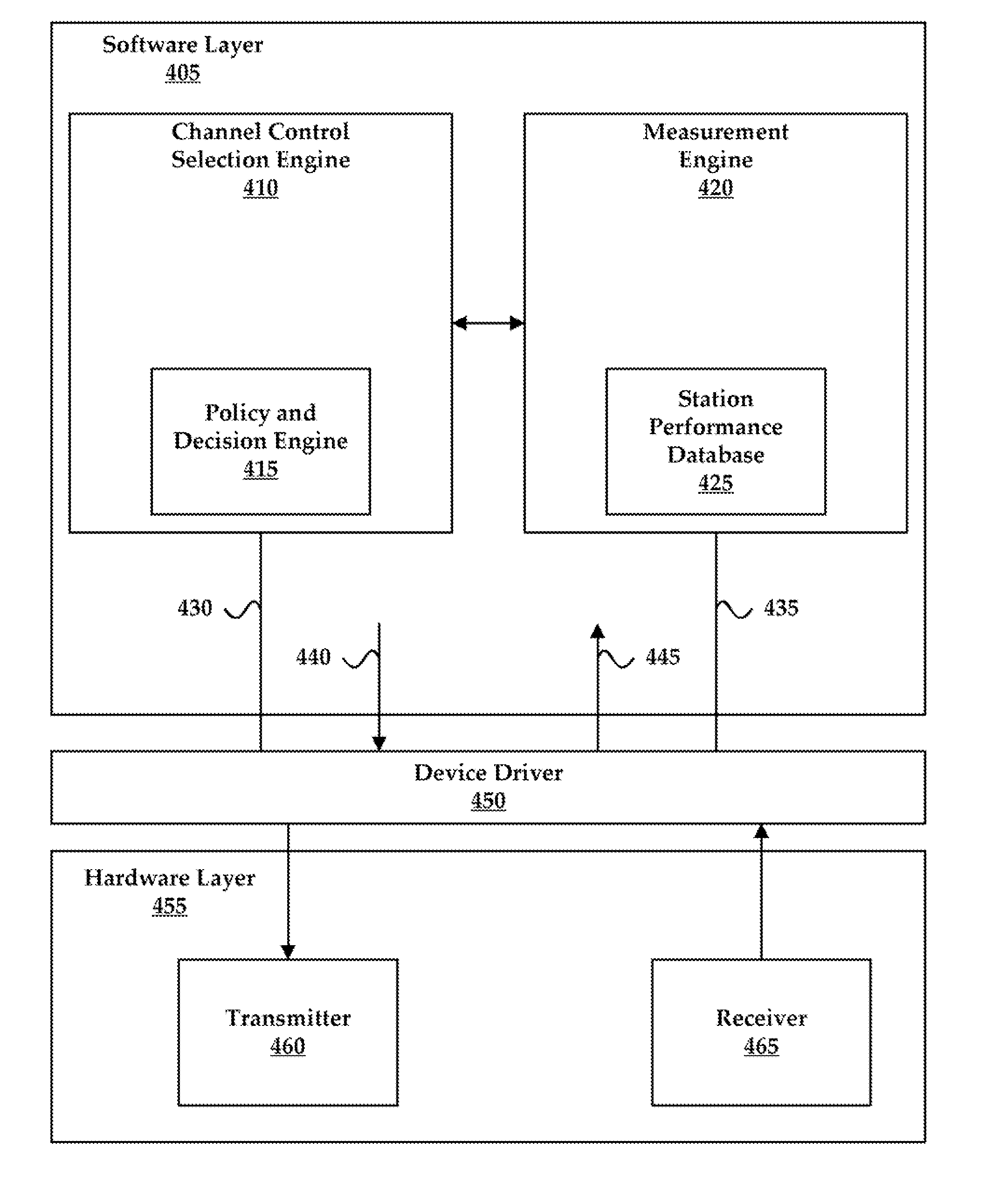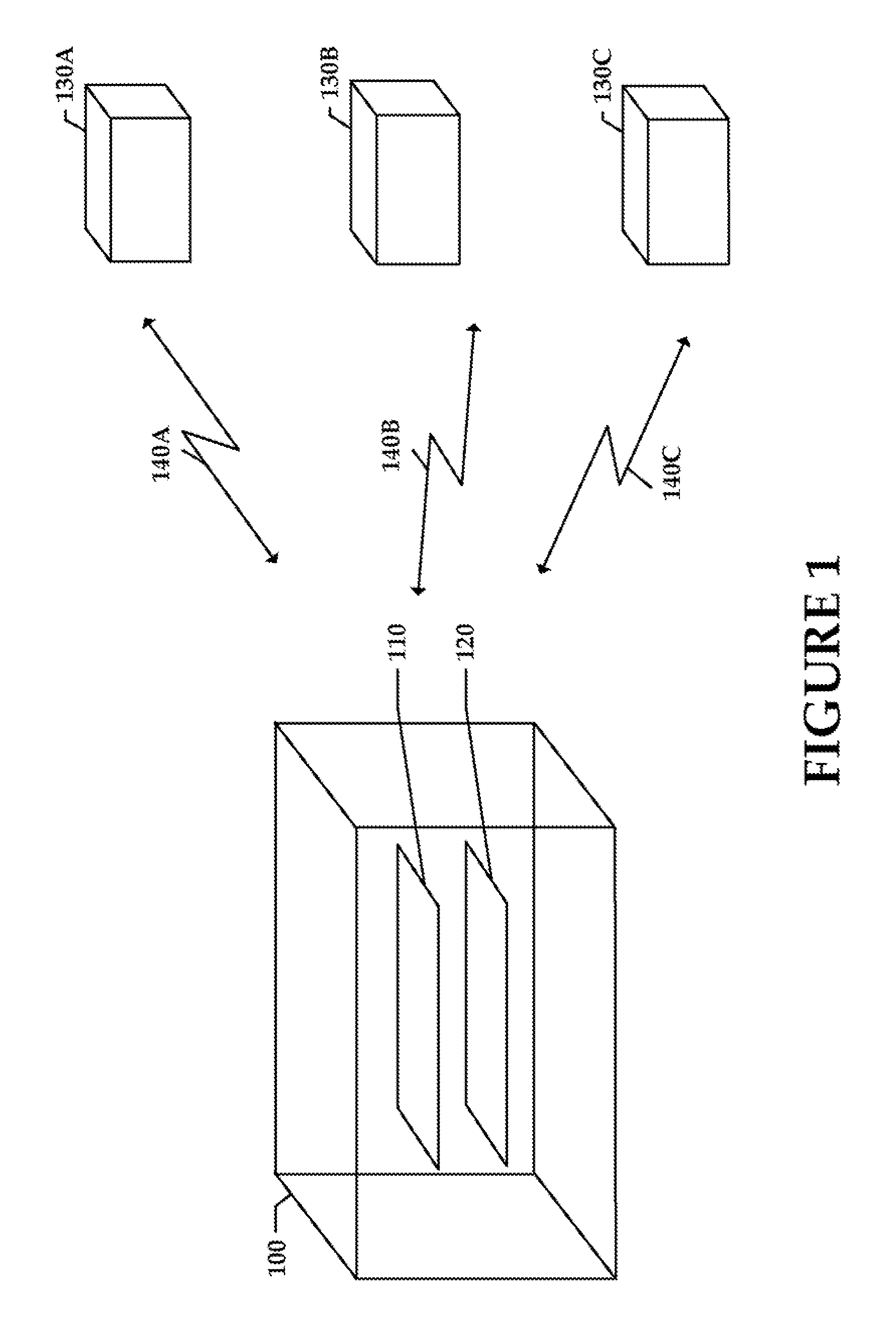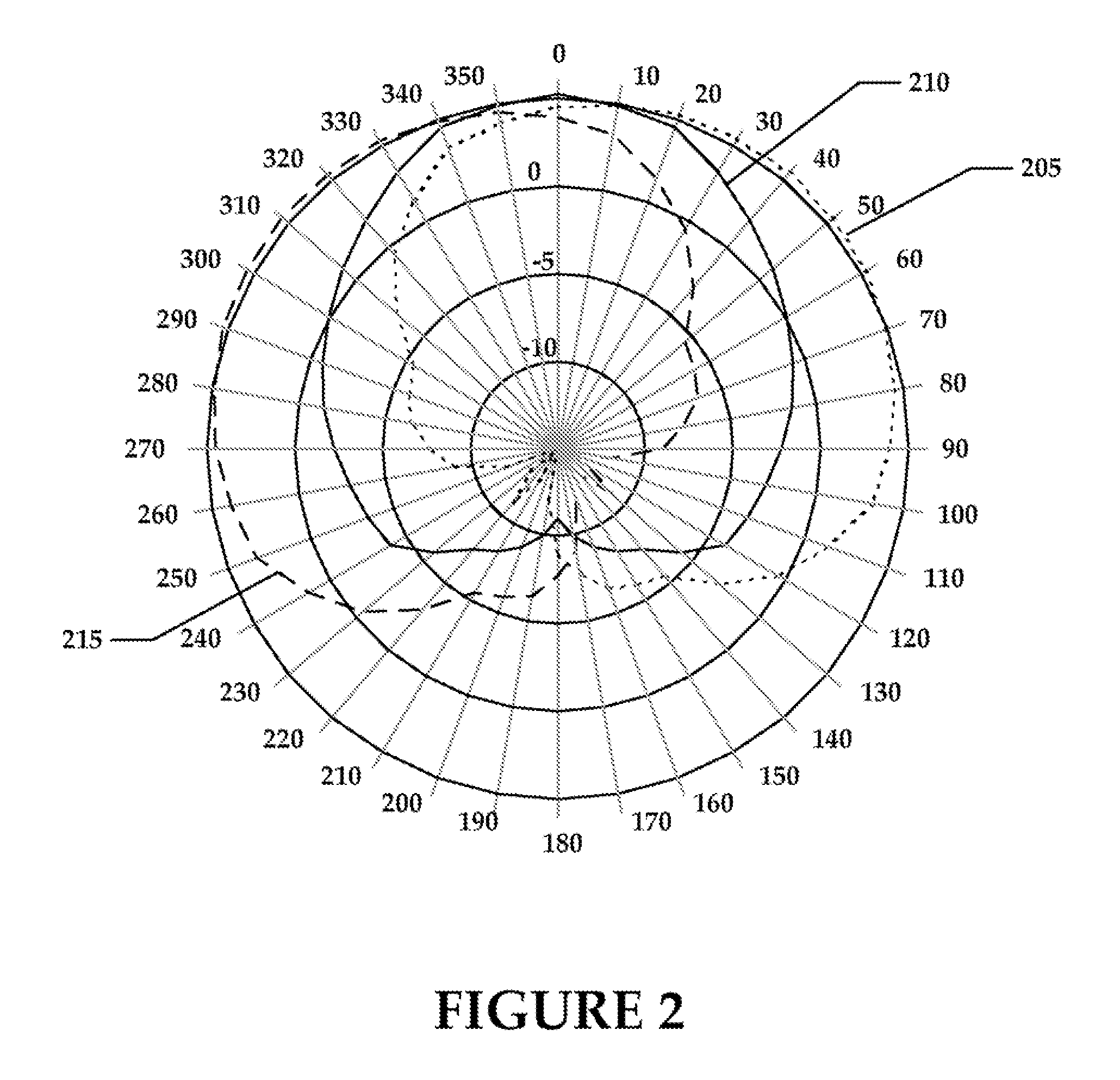Closed-Loop Automatic Channel Selection
a closed-loop, channel selection technology, applied in the direction of transmission, transmission monitoring, electrical equipment, etc., can solve the problems of affecting the affecting the overall performance of the wireless link, so as to optimize the radio performance in the network, and optimize the radio performance.
- Summary
- Abstract
- Description
- Claims
- Application Information
AI Technical Summary
Benefits of technology
Problems solved by technology
Method used
Image
Examples
Embodiment Construction
[0022] Embodiments of the present invention provide for selection of a transmission channel so that interference may be minimized in a wireless link to a remote receiving node. The presently described system (as may be embodied in, for example, an access point) may select a transmission channel that minimizes interference from other radio transmitting devices or disturbances in the wireless link between the system and the remote receiving device. The system may further select a corresponding antenna configuration to allow for maximum gain between the system and the remote receiving device. Alternatively, the system may select a transmission channel and / or antenna configuration corresponding to less than maximum gain but providing for reduced interference in the wireless link.
[0023] The elements identified throughout are exemplary and may include various alternatives, equivalents, or derivations thereof. Various combinations of hardware, software, and computer-executable instruction...
PUM
 Login to View More
Login to View More Abstract
Description
Claims
Application Information
 Login to View More
Login to View More - R&D
- Intellectual Property
- Life Sciences
- Materials
- Tech Scout
- Unparalleled Data Quality
- Higher Quality Content
- 60% Fewer Hallucinations
Browse by: Latest US Patents, China's latest patents, Technical Efficacy Thesaurus, Application Domain, Technology Topic, Popular Technical Reports.
© 2025 PatSnap. All rights reserved.Legal|Privacy policy|Modern Slavery Act Transparency Statement|Sitemap|About US| Contact US: help@patsnap.com



